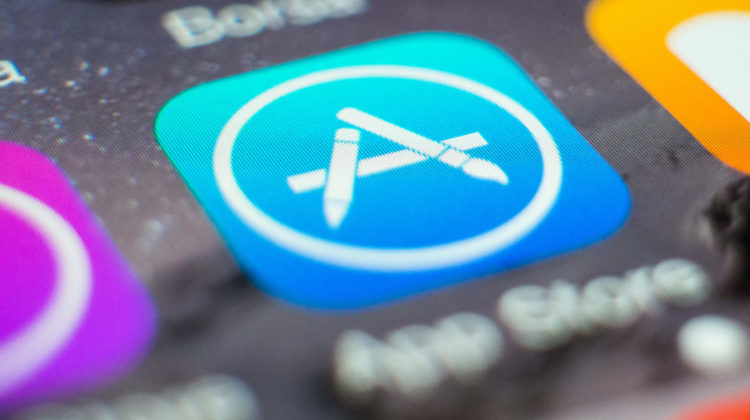
Photo Credit: OLYMPUS DIGITAL CAMERA
Seeing Data Overages all of a sudden? Wi-Fi Assist is likely the culprit.
I’m not going to lie—like most people, I use my phone more than I probably should… mostly just reading, checking emails, and choosing favorite photos to send to friends and family. In actuality, I should really disconnect and spend more time with those people, and I’ve been working on that. Still, even in my most distracted days, I’ve never even come close to using up all of my data before on my iPhone 6, or any phone, for that matter.
That is, until this past month, when I was hit with a $15 data overage charge. And I hadn’t done anything differently than I had in past months.
Thinking it must be a fluke, I contacted my carrier and tried to get to the bottom of any reasoning why that had happened. Probably 80% of the time I use my phone, I’m using it in my own home over Wi-Fi. Data charges should be few and far between. The representative walked me through a few troubleshooting steps to see if I somehow lost my Wi-Fi connection and kindly offered to credit me for the overage charge this time.
The problem didn’t stop there, though.
I was shocked to see how quickly I was plowing through my 1GB of data in October. In only a week and a half, I had used around 60% of my month’s allotment. I had been using my phone on Wi-Fi and even turning off Cellular Data when not absolutely necessary to help conserve my plan. How was this happening again? Realizing something was definitely wrong, I picked up the phone again.
This time the rep seemed to know the issue before I even finished explaining. She asked if I had updated my phone recently and suggested I go to Settings and scroll down to the bottom to Wi-Fi Assist. Little did she know I had already turned off that feature a few days prior when I Googled for solutions out of my frustration. I told her.
She assured me the Wi-Fi Assist was to blame for the spike in data usage and noted that the recent iOS update probably triggered the change. She offered me a no-charge upgrade to double my data on the same plan, just bumping my contract out by a few months. She called it a loyalty offer yet I’m a bit suspicious if it’s a bit of damage control to everything that’s going on with the barrage of billing complaints about these hidden data charges lately.
What Is Wi-Fi Assist
Your iPhone offers a feature called Wi-Fi Assist, which is set to “on” by default as part of iOS 9 last year and iOS 10 this past month. Designed to allow minimal disruption and less buffering, Wi-Fi Assist allows iPhones to automatically switch to a mobile cellular network when signal strength suffers. This feature replaces the previous workaround of manually disabling Wi-Fi during a bad connection.
As it turns out, the Wi-Fi Assist feature is capable of sneakily ringing up the data charges for unsuspecting customers under the guise of making sure you can “stay connected to the Internet even if you have a poor Wi-Fi connection.” Or, according to the rep, a connection that is still perfectly fine yet ever so slightly slower than usual. She explained that Wi-Fi Assist aims to make sure you always have great speed while browsing, but sometimes to the extreme, boosting cellular data usage and charges even when you would have been fine with the connection.
At least the feature won’t automatically toggle over to cellular data if you are roaming. So there’s that.
How Wi-Fi Assist Can Hurt You
If your main Wi-Fi network, for example, home, tends to be just a bit slower or spottier than iOS deems acceptable, your iPhone will automatically switch over to cellular data. If you read and play a lot on your phone, those Mb’s will quickly add up, resulting in unintentional (and unnecessary) data charges. Whether it’s a nominal $15 charge like I had or a $2,000 charge like one that blindsided a San Francisco teen, it’s still money that you didn’t mean to spend and shouldn’t have to pay.
Wi-Fi Assist is a little-known feature that most cell phone users may not even know they have on their devices. If you don’t know it’s there, you won’t know to turn it off. At least not until you stumble upon your next cell phone bill. And if you have AutoPay set up, it may take you longer still.
Apple’s support article about Wi-Fi Assist seems to have the flavor of a silver-tongued PR professional rather than a helpful tech guru, but at least wireless companies seem helpful enough—once you dial in, that is.
What You Should Do
Whether you want to disable the feature or adjust the settings is up to you. One writer points out on Mashable that you can simply adjust your settings to determine which apps and features are permitted to use data from your cellular bucket. Turn off data for the heavy hitters and see how it goes letting Wi-Fi Assist do its thing for GPS, email, and others you may use on the go.
If you still worry that you may exceed your allotment, turning off Wi-Fi Assist is a snap. The shame of it is that customers who don’t need it often don’t even know it’s there eating up their data. If you’re reading this now, you might want to cross-reference your cell phone bill with your Settings page and make sure you’re in the clear.
Interested in learning more about how Wi-Fi works?! Here is an excellent breakdown from Verizon Wireless.